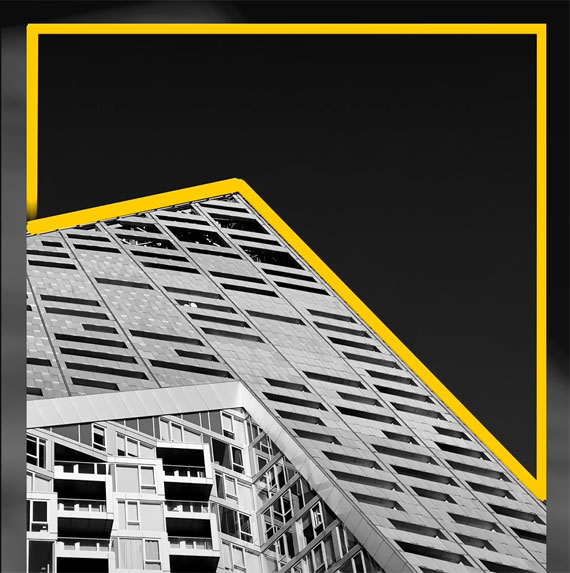Photographer Clifford Pickett from Urban iPhone Photography recently shared a transformative idea on how to enhance the impact of architectural photographs using an underutilized concept in photography: Negative Space. The role of negative space in photography often remains overshadowed by the main subject or structure. However, in his recent video, Pickett profoundly demonstrated how negative space can be used as a powerful compositional tool in architectural photography:
Pickett underscored the significance of negative space as a means to give ‘room to breathe’ to the photographed structures. A common instinct among photographers is to fill the entire frame with the structure or subject. This approach, although not inherently bad, sometimes loses the potential to provide a fresh, uncluttered perspective to the viewer. Pickett suggests an alternative strategy where negative space, especially a clear sky, can be used to give the image a more distinct and open feel.
The Magic of Black and White
The charm of negative space gets further amplified in black and white photography. By making the sky black, the photographer can seamlessly utilize negative space and introduce a more pronounced breathing room to the image. This can imbue the final result with a subtly different feel, enhancing the overall visual appeal.
Framing it Right
Negative space, according to Pickett, should ideally cover at least one-third of the frame. This ensures ample room for the image to breathe. With a clear blue sky as the negative space, the focus remains undistractedly on the building. It’s a creative compositional choice that could transform the visual outcome. Pickett encourages photographers to experiment with tilting the camera and playing with different angles, which can bring about the right balance of negative space and foreground.

Beyond Composition – A Tool for Content Creation
Negative space isn’t just an important compositional tool but also has practical implications in content creation, especially in the context of social media. Images often require text overlays for social media posts, and negative space provides the perfect ‘clean area’ for such text placements. It’s a clever way to ensure that your image doesn’t get too crowded and maintains its visual integrity even with the addition of text.
The Aesthetics of Asymmetry
Pickett also emphasizes that negative space doesn’t necessarily need to be symmetrical or uniformly spread. The concept of negative space goes beyond traditional framing norms, and it’s perfectly fine not to fill the frame with the entire structure. A telephoto zoom, for instance, can be used to highlight a particular corner or side of the building, with the rest of the frame being negative space. This approach further magnifies the details and the beauty of the architecture, offering a distinctive perspective to the viewer.
In conclusion, Clifford Pickett’s insights on the concept of negative space in architectural photography offer an invaluable perspective for both amateurs and professionals. By employing this simple yet powerful technique, photographers can create more engaging, unique, and aesthetically pleasing architectural images. It’s a compelling reminder that sometimes, less is indeed more.
Deal ending soon: The Urban iPhone Photography Course at 80% Off
- - - - - - - - - - - - - - - - - - - - - - - - - - - - - - - - - - - - - - - - - - - - - - - - - - - - - - - - - - - - - - - - - - - - - - - - - -
Did you appreciate this newsletter? Please help us keep it going by Joining Our Patreon Supporters
What are your thoughts on this article? Join the discussion on our Facebook Page
PictureCorrect subscribers can also learn more today with our #1 bestseller: The Photography Tutorial eBook
- - - - - - - - - - - - - - - - - - - - - - - - - - - - - - - - - - - - - - - - - - - - - - - - - - - - - - - - - - - - - - - - - - - - - - - - - -
The post Negative Space: The Unsung Hero of Architectural Photography appeared first on PictureCorrect.
from PictureCorrect https://ift.tt/L5wt6FC
via IFTTT






0 kommenttia:
Lähetä kommentti